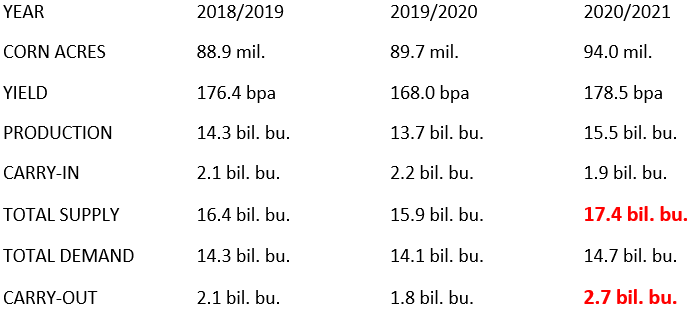Special Market Update
Grain Market Commentary
Wednesday, January 22, 2020
By Greg Johnson, Senior Originations Merchant, The Andersons
United States – China Trade Deal is Signed. Now What?
On January 15th, President Trump and Vice-Premier Liu He of China signed what is being called Phase 1 of the United States-China trade deal. Per the agreement, China could buy an additional $12.5 billion worth of U.S. commodities over the 2017 baseline in 2020, an additional $19.5 billion in 2021, and an additional $32.0 billion in 2022.
The key word in all of this is “could.” According to some analysts, the trade agreement gives China the opportunity to purchase more U.S. commodities, but only if market conditions make it favorable for China to purchase the commodities. It does not mandate China to purchase a specified amount of U.S. commodities; it removes the Chinese tariffs on U.S. exports, which would allow China to import U.S. commodities at cheaper prices. So hopefully, this will lead to more Chinese purchases of U.S. commodities.
The other thing to keep in mind is that there are a wide variety of commodities that China can buy which would qualify under the terms of the agreement. This includes meats, oilseeds, cereal grains, cotton, seafood, forest products, and other commodities. Details concerning the specific breakdown of how much of each commodity is to be purchased were not released. Bottom line: corn, soybeans and wheat are all a part of the agreement, but the specific amounts for each commodity will not be publicly announced.
It has been a week since the agreement was signed. Corn prices have lost a penny in the week since the deal was signed, while soybeans have lost 28 cents and wheat has gained 11 cents. Wheat prices have firmed because of supply problems in other countries, so the trade deal has not been helpful in the short run.
How about in the long run? While a trade deal is better than no trade deal, it is probably a good idea to focus on the big picture (especially since we will not know the specific breakdown of corn, soybean, and wheat demand until after the fact). Below is an overview of the supply and demand for corn for the past 2 years, along with a projection for this year:

We are assuming that we will plant 4 million more acres of corn this year. (Remember that there were 11 million acres of prevented plant corn in 2019, so this seems like a realistic assumption). We are also assuming that the U.S.-China trade deal will stimulate demand indirectly. Even if China does not buy a lot of U.S. corn, they will probably buy some ethanol, distillers’ dried grains (DDG’s) and wheat, all of which would indirectly help corn demand. But even with this increased demand, the U.S. corn carryout for 2020/2021 could reach 2.7 billion bushels. So, unless we have a weather event in 2020 to reduce the yield, or unless China buys more corn that what we are assuming above, ending stocks will be at some of the highest levels in many years. Selling corn with a “4” in the price (which you can do today) may look very attractive by this time next year. Get in touch with your Andersons account representative and ask how you can lock in “a floor with a 4” while still retaining upside price potential.